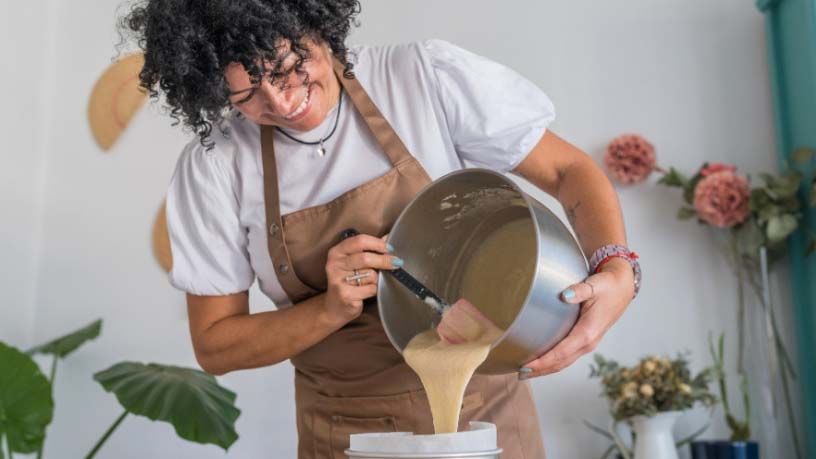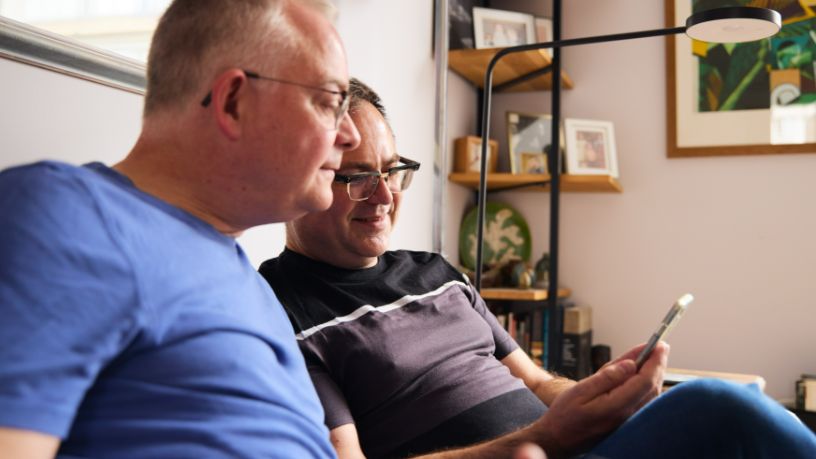Hypoglycaemia and hyperglycaemia can lead to serious health issues if left untreated.
Key takeaways
Understanding what influences blood glucose levels and knowing how to manage them when they are too low or too high is at the heart of any diabetes management plan.
- Learn how to respond to a hypo, with step-by-step actions plus some foods and drinks you might keep handy.
When you’re living with diabetes, the goal is to consistently keep your blood glucose levels (BGLs) in the ‘goldilocks’ zone. That is, not too high and not too low.
When your BGLs are too high, it’s known as hyperglycaemia. When they’re too low, it’s called hypoglycaemia (or ‘hypo’).
Hyperglycaemia can cause unpleasant short-term symptoms and, over time, it can lead to serious long-term complications.
Hypoglycaemia, on the other hand, is a more immediate health concern where you need to act fast to bring your BGLs back up to avoid fainting, fitting, losing consciousness or even death.
If you or someone close to you lives with diabetes, it’s important to have a detailed understanding of hyperglycaemia and hypoglycaemia. Here, we explore each.
Hyperglycaemia
When your blood sugar levels are too high, you might experience early, short-term symptoms such as:
- excessive thirst
- frequent urination
- tiredness
- weight loss
- vision problems like blurring
- susceptibility to infections.1
While occasional high BGLs are not a major problem, regular high levels can cause serious long-term health issues. This includes damage to your nerves and blood vessels, which can affect other parts of your body like your heart, kidneys, nerves and eyes.1
If you have diabetes, hyperglycaemia may be caused by things like:
- forgetting to take or incorrectly taking diabetes medication or insulin
- taking certain medications like corticosteroids
- consuming a lot of high-carbohydrate food and drinks
- consuming too much alcohol
- low physical activity
- sickness, infection or emotional stress.2
To avoid hyperglycaemia, it’s important to know and ask your doctor about your individual blood glucose targets. In general, the target BGLs for someone living with diabetes are:3
|
Type 1 diabetes |
Before meals: 4.0 to 7.0 mmol/L 2 hours after starting a meal: 5.0 to 10.0 mmol/L |
|
Type 2 diabetes |
Before meals: 4.0 to 7.0 mmol/L 2 hours after starting a meal: 5.0 to 10.0 mmol/L |
These targets can be different for everyone and may change over time. Speak to your treating team if you notice any changes or symptoms.
Member Health Programs
Discover health cover that's right for you with a range of personalised programs and services designed to support your health and wellbeing.
Hypoglycaemia
If your BGLs are too low, you might feel weak and find it hard to concentrate. Other symptoms of hypoglycaemia include:
- light-headedness or dizziness
- headaches
- sweating
- trembling or shaking
- hunger
- numb lips or fingers
- irritability
- confusion4
Hypoglycaemia can be caused by a range of things. These include:
- delaying or skipping meals or snacks
- not consuming enough carbohydrates
- being more physically active than normal
- changes to your diabetes medication or dose
- drinking too much alcohol, particularly without enough food beforehand.5
For most people, a hypo occurs when your BGLs fall below 4.0 mmol/L.4
If you experience any of the above symptoms, check your blood glucose immediately. If it turns out to be hypoglycaemia, follow these 2 steps for dealing with it:
How to treat a hypo
Step 1
If your BGLs are too low, consume a quick-acting carbohydrate (hypo) food or drink, This can help restore your BGLs to normal.
If you live with diabetes, it’s important to keep fast-acting glucose handy at home, in your car and at work. They might include:
- glucose tablets (with 15 grams of carbohydrate)
- 6 or 7 regular-sized jellybeans
- half a can (150 ml) of regular soft drink (not diet or sugar-free)
- 3 teaspoons of sugar or honey
- half a glass (150 ml) of fruit juice.4
Wait 10 to 15 minutes after eating then check your BGLs again. If they’re still too low (below 4 mmol/L), have another hypo food or drink then wait another 10 to 15 minutes before checking your BGLs again. If your levels have still not returned to normal, call your doctor straight away.
Step 2
If your BGLs return to normal after eating, stop consuming hypo foods and drinks, even if you still feel some symptoms. Then start planning ahead for your next meal.
- If your next meal is within 20 minutes: Wait and eat your meal at the normal time.
- If your next meal is more than 20 minutes away: Eat a small snack of longer-acting carbohydrate, then eat your meal at the normal time.
Longer-acting carbohydrates are absorbed more slowly, which can help regulate your BGLs over time. It helps to also keep these foods handy. They include:
- a slice of bread
- a glass of milk
- a piece of fruit
- 2 or 3 dried apricots, figs or other dried fruit
- a tub of natural low-fat yogurt.4
It’s important to treat hypoglycaemia quickly to avoid severe symptoms. In serious cases, it can lead to seizures, loss of consciousness and even death.6
If you live with diabetes, make sure your family, friends and co-workers are aware of your condition and can recognise signs of a hypo (and know where your hypo foods and drinks are kept).
If a person with diabetes is unable to swallow, feels drowsy or is unconscious, this is an emergency. Call 000 for an ambulance and do not give them any food or drink.
Resources
Diabetes Australia offers resources on preventing and living with diabetes. Visit their website or call them on 1800 177 055.
The National Diabetes Service Scheme (NDSS) offers online resources, advice and a dedicated helpline on 1800 637 700.

At Bupa, trust is everything
Our health and wellbeing information is regularly reviewed and maintained by a team of healthcare experts, to ensure its relevancy and accuracy. Everyone's health journey is unique and health outcomes vary from person to person.
This content is not a replacement for personalised and specific medical, healthcare, or other professional advice. If you have concerns about your health, see your doctor or other health professional.
1Diabetes Australia. (2022). Hyperglycaemia: symptoms, risks and management. Diabetes Australia.
2Healthdirect. (2022) Hyperglycaemia (high blood sugar). Healthdirect.
3Diabetes Australia. (2022). Blood glucose level range. Diabetes Australia.
4Diabetes Australia. (2022). Hypoglycaemia (hypo) and Hyperglycaemia. Diabetes Australia.
5Healthdirect. (2022). Hypoglycaemia (low blood sugar). Healthdirect.
6Cleveland Clinic. (2023). Hypoglycemia (Low Blood Sugar). Cleveland Clinic.
You might also like...
6 diabetes friendly desserts
Just because you have diabetes doesn’t mean you always have to skip the sweet treats. Discover 6 easy and delicious diabetes friendly desserts.
Type 2 diabetes: Jacqui's remission journey
When she was diagnosed with type 2 diabetes, Jacqui wasn’t surprised. But, after putting in the hard work, she’s managed to get her condition under control.
Diabetes 101: What are the different types?
Understanding the different types of diabetes is an important step in learning how to manage your health and preventing serious issues in the future.
7 diabetes snack swaps to conquer cravings
Living with diabetes shouldn’t mean sacrificing snacks. Discover 7 healthy and filling swaps that are just as good as the originals.





